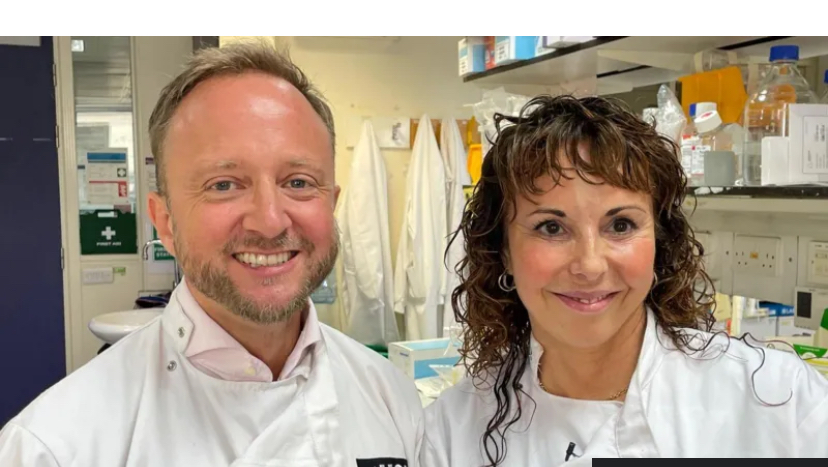Groundbreaking gene therapy slows huntington’s disease by 75%

Doctors have announced what many believed impossible: for the first time, a treatment has dramatically slowed the progression of Huntington’s disease. Often described as one of the cruellest inherited conditions, Huntington’s steadily destroys brain cells and combines symptoms of dementia, Parkinson’s and motor neurone disease.
Preliminary data from a pioneering trial show the new therapy cut the disease’s decline by an average of 75%. In practical terms, a year’s worth of deterioration could now take four years, extending patients’ quality of life by decades. “We never dreamed of this scale of effect,” said Prof Sarah Tabrizi, director of University College London’s Huntington’s Disease Centre, who described the results to the BBC as “spectacular.”
The approach is a sophisticated one-time gene therapy delivered during 12–18 hours of precision neurosurgery. A harmless, modified virus carries specially designed DNA deep into two key brain regions — the caudate nucleus and putamen — guided by real-time MRI. Once inside the neurons, the therapy turns the cells into miniature drug factories, producing microRNA fragments that intercept and neutralise the mutant huntingtin messenger RNA responsible for making the toxic protein that kills brain cells. Lowering those protein levels protects neurons from further damage.
This trial, involving 29 volunteers, is already transforming lives. One participant who had been forced into medical retirement is now back at work; others remain mobile when they were expected to be wheelchair-bound. Although some patients experienced treatable inflammation or headaches from the viral vector, the treatment was otherwise considered safe. Because neurons are long-lived, researchers expect the benefits to last for life.
The emotional impact on the research team has been profound. “To be living in a world where we know this is possible — the effect is breathtaking,” said Prof Ed Wild, consultant neurologist at UCLH.
Huntington’s is caused by a mutation in the huntingtin gene, which gives each child of an affected parent a 50% chance of inheriting the faulty DNA. The defective protein gradually poisons the brain, usually triggering symptoms in a person’s 30s or 40s and leading to death within two decades.
For Jack May-Davis, whose father and grandmother both died of Huntington’s, the trial has transformed his outlook. The 30-year-old barrister’s clerk from London, newly engaged to Chloe, took part in research at UCL and had resigned himself to sharing his father’s fate. Now he says the breakthrough leaves him “overwhelmed” and able to imagine a longer, brighter future.
Early lab markers are equally striking: neurofilament levels — a sign of dying brain cells — were expected to rise by a third but instead fell below baseline after treatment, suggesting real preservation of neurons.
The therapy was developed by biotech company uniQure, which plans to seek US approval in early 2026 and then open talks with regulators in Europe and the UK. Pricing has not been announced but gene therapies are typically costly because they are given once and offer long-term benefit; the NHS already funds some multi-million-pound one-time treatments.
Prof Tabrizi calls this only “the beginning.” She is now planning the first “stage-zero” prevention trial in people who carry the gene but show no symptoms, hoping to delay or even stop the disease entirely. She paid tribute to the “truly brave” volunteers who made this possible.
If the results hold up under peer review, medicine may be witnessing the dawn of a new era for Huntington’s — and a lifeline for thousands of families previously facing inevitable decline.
frequently asked questions — huntington’s gene therapy (amt-130 / uniQure)
1. what happened?
a one-time gene therapy (amt-130) gave top-line results showing a ~75% slowing of clinical disease progression at 36 months in patients who received the higher dose in the phase i/ii study.
2. who ran the trial and who announced the results?
the data were announced by biotech company uniQure with major involvement from ucl / uclh researchers led by prof sarah tabrizi.
3. how many patients were in the analysis?
the report covers 29 patients who completed up to 36 months of follow-up; 12 people in the study received the higher dose and had a full 36-month data set.
4. what is amt-130 and how does it work?
amt-130 is a gene therapy delivered once via neurosurgery. a harmless viral vector carries a DNA sequence into neurons in the caudate nucleus and putamen; those cells then produce microRNA that lowers the mutant huntingtin messenger rna, reducing the toxic huntingtin protein.
5. how is the treatment delivered?
delivery requires delicate brain surgery guided by real-time mri, with microcatheters placed into target regions; the infusion can take many hours. the procedure is complex and done at specialist centres.
6. what clinical measures drove the 75% claim?
the 75% figure refers to slowing on combined clinical measures at 36 months (including motor, cognitive and functional scales such as a composite uhdrs measure); uniQure compared treated patients to an external natural-history cohort (enroll-hd).
7. were there biomarker changes?
yes — biomarkers consistent with less neuronal damage were reported: neurofilament levels (a marker of neuron injury) did not rise as expected and in some analyses fell, suggesting preserved brain cells.
8. is the result peer-reviewed and published yet?
the announcement is a top-line / press release from uniQure and accompanying institutional statements (ucl / uclh). full peer-reviewed publication and independent data review are expected next; experts have urged careful appraisal of the full dataset.
9. is the treatment safe?
the therapy was generally tolerable in the trial but some patients developed inflammation related to the viral vector that caused headaches, confusion or required steroids; investigators described the safety profile as manageable but emphasised monitoring.
10. who might be eligible to get it if approved?
eligibility will depend on regulatory approvals, the labelled indication, and which clinical stage (symptomatic or pre-symptomatic) regulators approve. the trial included symptomatic adults; future prevention (stage-zero) trials are being planned.
11. will the effect last for life?
researchers noted that because neurons are long-lived, the therapy could have durable, possibly lifelong effects, but long-term follow-up and larger studies are required to confirm durability.
12. how many people have huntington’s and who could benefit?
approximately tens of thousands in the combined uk/us/europe regions are affected and many more carry the mutation; if approved, the therapy could target those diagnosed and, later, pre-symptomatic carriers in prevention trials.
13. when will it be available to patients?
uniQure plans to apply for us regulatory approval (bla submission / accelerated pathways) in early 2026 and then discuss uk/eu regulatory steps. approval timelines depend on regulators’ review.
14. how much will it cost?
no official price has been announced. gene therapies historically carry very high one-time costs; uniQure and healthcare systems will negotiate pricing and reimbursement if/when approvals occur. examples exist of multi-million-pound single-dose gene therapies being reimbursed in the nhs.
15. is this a cure?
the company and investigators describe the result as a major breakthrough that substantially slows progression in treated patients, not an immediate cure. the aim is to lower mutant huntingtin and halt or dramatically slow neuronal loss — which could transform outcomes — but more evidence and longer follow-up are needed.
16. were real patients helped in day-to-day life?
trial reports include real-world improvements: some participants have better function than expected (for example returning to work or remaining mobile when a wheelchair was expected). these are encouraging but come from a limited number of participants.
17. what are the next research steps?
publish full data in peer-reviewed journals, regulatory submissions, larger pivotal trials or expanded access programs, and planned prevention trials in people who carry the mutation but are asymptomatic (stage zero).
18. where can i read the official announcements and expert reactions?
official uniQure press releases and investor postings, ucl / uclh statements, major news outlets (guardian, bbc, cnn, abc), science media centre expert reactions, and specialist sites (hdbuzz, huntingtonsdiseasenews) have coverage and commentary.
19. what should patients and families do now?
talk to your specialist huntington’s clinic or genetic counsellor — don’t change care plans based solely on headlines. centres will update on trial eligibility, future prevention trials, and whether local access programs or referral pathways are available.
20. how confident should we be in the 75% figure?
this is a remarkable top-line result but it comes from a phase i/ii dataset with a relatively small number of high-dose patients compared to a matched external control. experts call it potentially practice-changing but emphasise the need for full datasets, peer review and replication in larger cohorts before concluding definitively.




